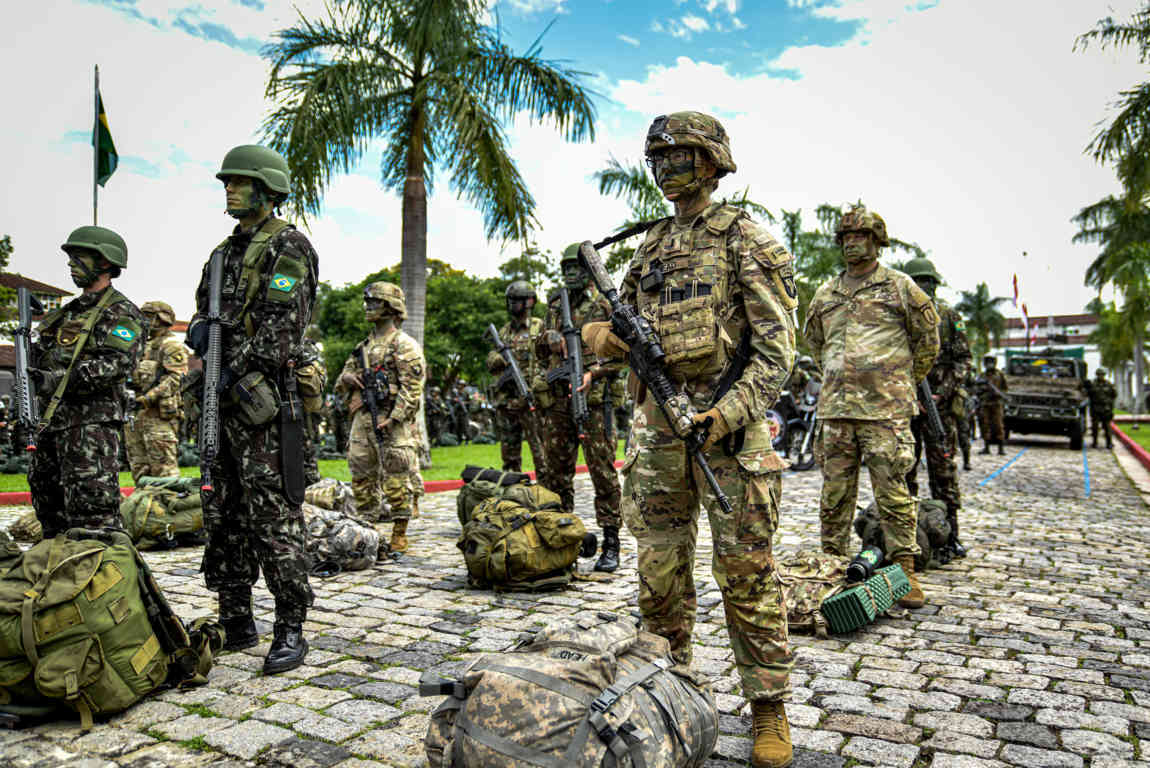Operation CORE is part of the XXXVII Bilateral General Staff Conference between Brazil and the United States of America. It is an important chapter in the historical relationship between these two nations, which began with the United States as the first nation to recognize Brazil’s independence approximately 200 years ago.
Considering this fact, it is important to trace a timeline, which will start from a brief historical cutout preceding the central theme of this analysis. In this sense, we can highlight that, in its military expression, the Brazil-USA relationship began to gain its main contours from 1934, on the occasion of the so-called American Military Mission (AMM).
At that time, French military doctrine had a strong influence in the Brazilian barracks, and the objective of the American mission was to orient the teaching at the Army Technical School, create the Coast Artillery Instruction Center¹ and provide an adaptation to the “fire-control “² system.
Coincidentally, with the end of the MMA, in 1939, the Second World War began, in which there was an intense operational involvement between the allied armies of Brazil and the US. The Theater of Operations in Italy demanded great adaptation from the Brazilian Expeditionary Force (FEB); however, after an intense period of instruction and actual operations with the American Fifth Field Army, the Brazilian troops became a force of choice.
At that juncture, the connection between Brazil and the U.S. was intensified, as reported by Marshal Castello Branco, then an FEB operations officer, who stated in one of his lectures: “after Monte Castelo, Brazilians and Americans were no longer allies, but men who, like brothers, were fighting in Italy.
After 1945, as the years went by, despite the successive changes of governments and ideologies (in both nations), bilateral military cooperation agreements were signed in several areas, such as: operations, science and technology, and logistics.
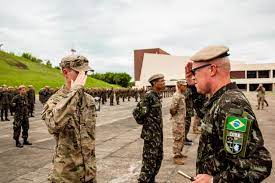
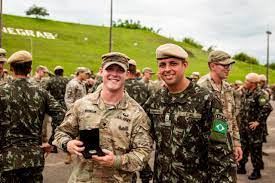
In this scenario, marked by several cooperation agreements that contributed to the improvement of the military capabilities of both countries, we have reached the 21st century, more precisely the year 2017, when work began to conduct annual combined exercises involving Brazil and the United States.
Thus, the Combined Operations and Rotation Exercise (CORE) was created. Among its main objectives we can highlight the exchange of experiences with the US Army, especially regarding training methods, organization and employment of troops, and the establishment of future partnerships for training.
Its operational design³ is structured in a series of lines of effort to improve interoperability between the two armies. One of these is the improvement of capabilities in the Movement and Maneuver combat function.
To this end, exercises are planned until 2028, with the executing country alternating. In Brazil, it is expected that the operation will be carried out in different biomes throughout the editions that will take place in the country.
In order to achieve the above-mentioned line of effort, the Land Operations Command (COTER), through the Land Force Readiness Directorate, is responsible, within the Brazilian Army, for managing and coordinating troop participation, as well as supervising their respective training activities.
Thus, in 2020, the first product of this macroprocess began with the so-called Operation CULMINATING, which took place in early 2021. In this activity, a subunit of the Parachute Infantry Brigade was integrated with an American battalion in a rotation for the certification of troops at the JRTC (Joint Readiness Training Center), located at Fort Polk, Leesville, Louisiana, USA. In that combined operation, 200 military personnel from the Brazilian Army were certified as troops in readiness, according to the strict criteria of the U.S. Army, demonstrating their high level of training.
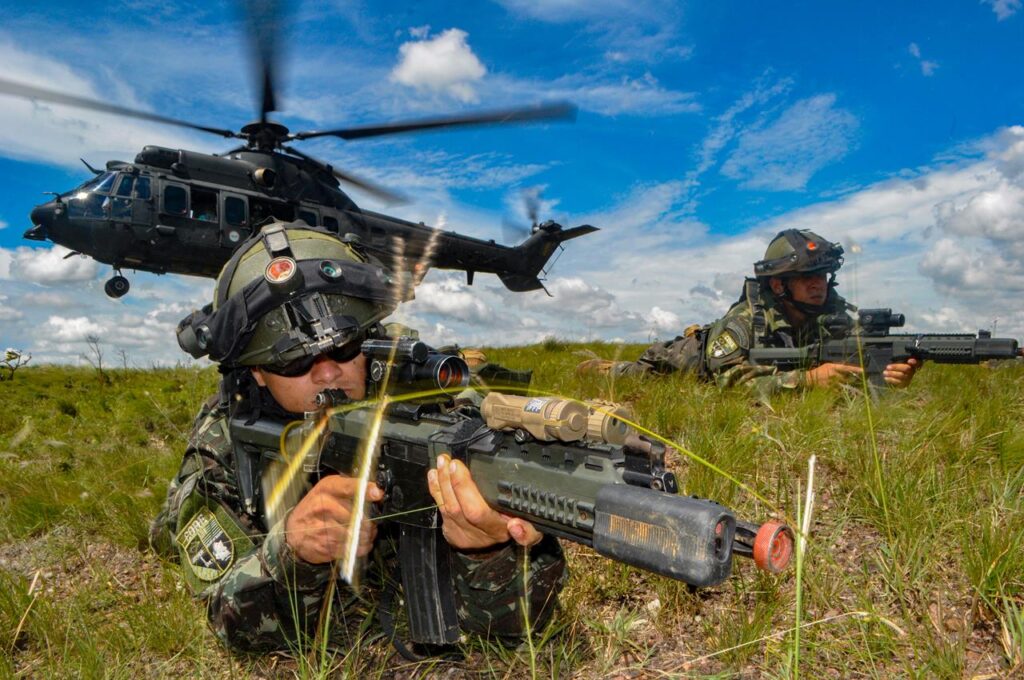
Also in this context, and according to the agreements foreseen for the year 2021, Operation CORE 21 was carried out. On this occasion, an American subunit operated integrated with a battalion of the 12th Light Mobile Infantry Brigade, under Brazilian Army command.
CORE 21 was carried out in the Vale do Paraíba region, between November 28 and December 18, 2021, whose sequencing of actions was based on a hypothetical tactical framework of an operation approved by the UN Security Council.
Completing our timeline, we come to Operation CORE 22. This activity will take place in the JRTC during the month of August this year. The Brazilian troop will consist of a subunit composed of soldiers from the 12th Airborne Light Infantry Brigade, who will be embedded in the tactical staff of the 2nd Battalion of the 506th Infantry Regiment of the 3rd Brigade of the 101st Airborne Division.
Similar to what has been done in previous editions of CORE, there was a careful selection process, based on strict parameters such as technical-professional knowledge and physical conditioning of the participants.
Besides this, it is worth mentioning that the FORPRON (Readiness Force) troops, who are the best prepared and equipped of the Brazilian Army, have been used in this exercise, which confirms that this important Land Force project is being conducted correctly.

The preparation process for Operation CORE 22 was guided by the ARATU Operations. In this context, three ARATU Operations were conducted in the first semester of 2022, the first two in Vale do Paraíba and the third in Formosa Field of Instruction (CIF). In the latter, considered the most important, the Coordination and Liaison Team sought the Brazilian region that most closely resembled the one the troops would find in the US.ought the Brazilian region that most closely resembled the one the troop would find in the US.
Given the above, we can verify that the Brazilian Army is prepared for another edition of CORE, not only for the combat and training history that connects it to the U.S. Army, but also for the capacity of its personnel for another challenge to represent Brazil in foreign lands.
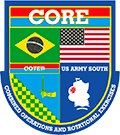
¹ Initially operated at Fortaleza de São João – Urca (RJ)
² Control system for firing cannons that were designed for moving targets and that in coastal and anti-aircraft artillery would have to shoot at moving targets.
³ It is one of the products of the operational approach that most symbolize the connection of the conceptual component with the detail planning.
About the author:
Lt Col Dardano do Nascimento Mota – Communications Officer, Class AMAN 2000. War Material Maintenance (EsMB 2003), Basic GE (CIGE 2004); EsAO 2009; Specialization in Management (EsIE 2013); CCEM 15/16.
*** Translated by the DEFCONPress Team ***
